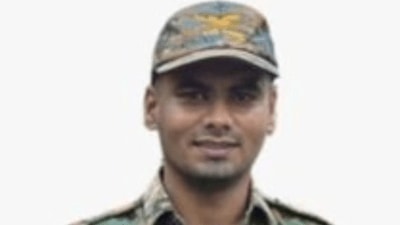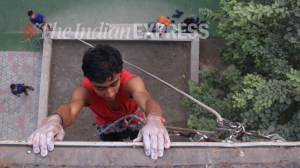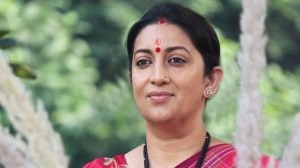The untold stories of growth
Up to a decade and a half ago, growth stories in Indian agriculture meant wheat or paddy and also Punjab, Haryana, Western UP or some del...

Up to a decade and a half ago, growth stories in Indian agriculture meant wheat or paddy and also Punjab, Haryana, Western UP or some delta districts in the south. In the early Eighties when I was Chairman APC, Shashi Bhatnagar was a very successful Agricultural Production Commissioner of UP. They wanted a higher price for wheat and I said why should we give it to you, since production doesn’t rise in eastern UP.
A voice growled from a backseat saying “Mahoday, Poorvi vistar mein utpadan barh raha hain.” It was the then unknown Bhure Lal. He had organsied a breakthrough and wasn’t going to let an academic get away. I went on a jeep from Lucknow, through Barabanki to Faizabad and went to villages the jeep wouldn’t so to, came back convinced that he was right.
Production levels had remained here through centuries at less than a tonne a hectare and were crossing the levels of around 14 quintals which Haryana had reached on an average in the early green revolution period. That year in 1982 at myinaugural address to the Indian Society of Agricultural Economics, I said that a breakthrough in production in Eastern UP had taken place. The Society politely published my address, but wouldn’t bite. It took the profession another five years to accept. Meanwhile Shashi Bhatnagar and Bhure Lal had gone to make history elsewhere. The moral: In agriculture you have to be alert to sustain growth impulses.
Where is growth taking place now? There are very few growth stories recently in rice and wheat. The hybrid paddies are a breakthrough and rice yield is steadily rising, as wheat is losing its pride of place. But now our agricultural research secretary has presented to the world a very interesting story of growth. This is the story of soya. But before I come to Paroda’s story, I will start at the beginning. For the story of soya is a happy one of growth at the right places and at very little cost. Also, if we are wise, there is a lot more to do.
The story of the breakthrough in soya starts with the late M.Sivaraman, one of the architects of the Green Revolution in India, together with C. Subrahmanian and M. Swaminathan. Incidentally, I was horrified to learn recently that Sivaraman died in Chennai of cardiac arrest. He was very field-oriented. His ICS experience from Orissa had convinced him that great possibilities lay in Madhya Pradesh. Millions of hectares of land in Madhya Pradesh, adjoining areas in Maharashtra, Rajasthan and Gujarat consist of the vertisols, the so called black cotton soils. They are historically left fallow in the rainy season and followed by a wheat or chickpea crop. Sivaraman organised these areas for a soya crop in the “fallow” season. It was a great idea. This soil doesn’t allow uncontrolled irrigation, because with the kind of water, the Ganga for example can deliver. Soya needs very little water. Sivaraman organised the seeds and suggested some fertiliser and pesticide. As Paroda points out, this is still the technology package, although biotech is knocking at the margin. Itbegan in a few thousand hectares. Growth was rapid, but jerky. Sivaraman’s crusade faced three obstacles.
First, processing plants which he had provided for came slowly, if at all. There was initially also a demand problem, even though Sivaraman convinced the Planning Commission, where he was member, to serve soya meat curry in the officer lunches. Second, economic policy was a bottleneck. There were movement restrictions on oilseeds and soyabean grown in one district in MP couldn’t move to the district where the processors were. There was also a stocking limit on oilseeds for the private sector even when soya was in excess supply and NAFED wouldn’t buy at the support price. Sivaraman battled bravely. By the early Eighties MP reached around four lack hectares. The third reason was still more bizarre. The state and central planners wanted more area under grains. In this area it meant rice, which on the vertisols was a disaster.
In the Tawa project an MP journalist wrote on the waterlogging on account ofuncontrolled irrigation from the Narmada, I was asked by the PMO to check. The truth was worse. The gate on the branch on one side of the river was stuck and the Narmada flowed freely into the black soils causing immense damage. The farmer was told to grow rice, which he couldn’t and in a “research” farm nine quintals of rice were grown per hectare. Meanwhile, if they had followed the soya route, they would have made thrice the money.
By the early Nineties, the worse was over. Soya area, at six lakh hectares in India, now is over six million hectares. Yields stuck at around half a tonne are now averaging around a tonne per hectare. Soya meal export is over two million tonnes annual. Above all, I learnt my lesson and the Narmada canals have been designed with computerised hydraulic supply controls upto the village. Now the canals are there, but they won’t let the water come even in limited quantities. Cussedness and obscurantism can only be fought slowly. But Paroda has listed the available seeds, theorganic fertilisers and pesticides possible and the biotech fields to be covered. We are doing better and with a little wisdom and support, Paroda’s dream of doubling area and yield in the next decade can be realised.





- 01
- 02
- 03
- 04
- 05


























